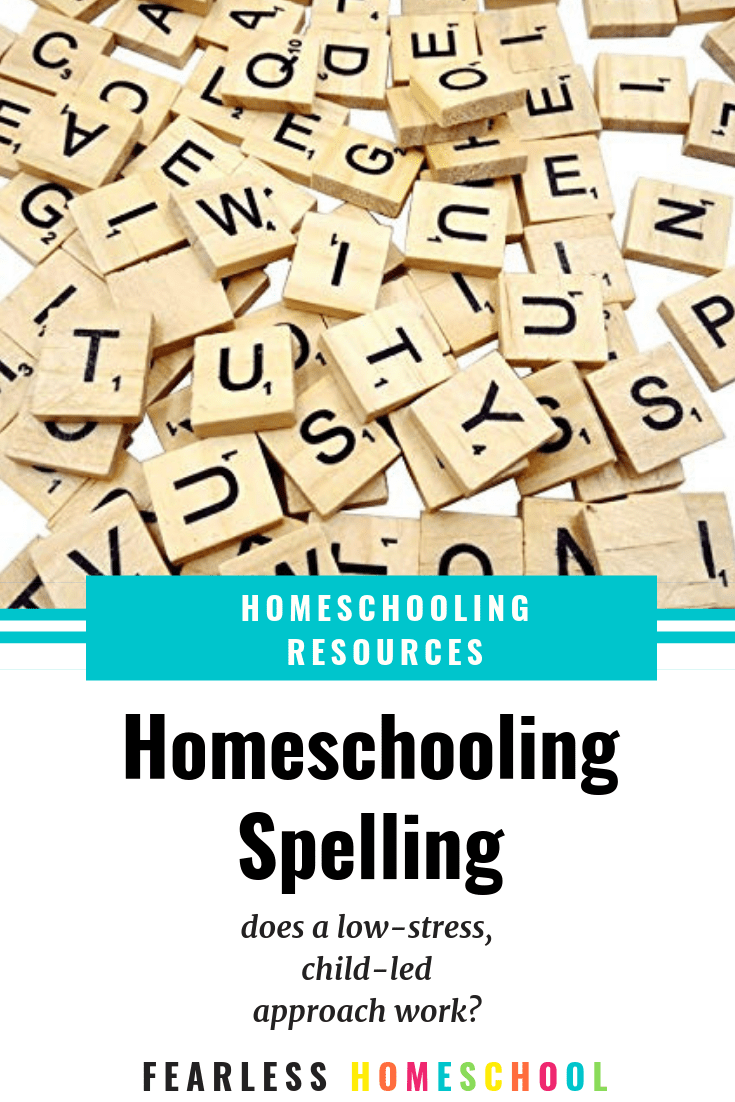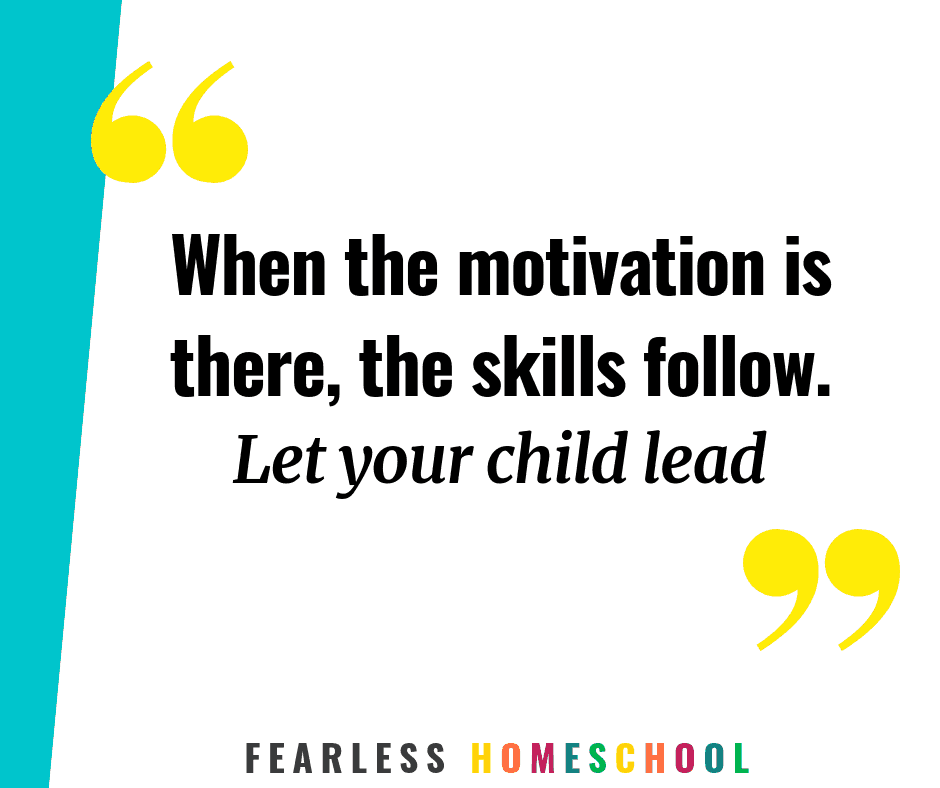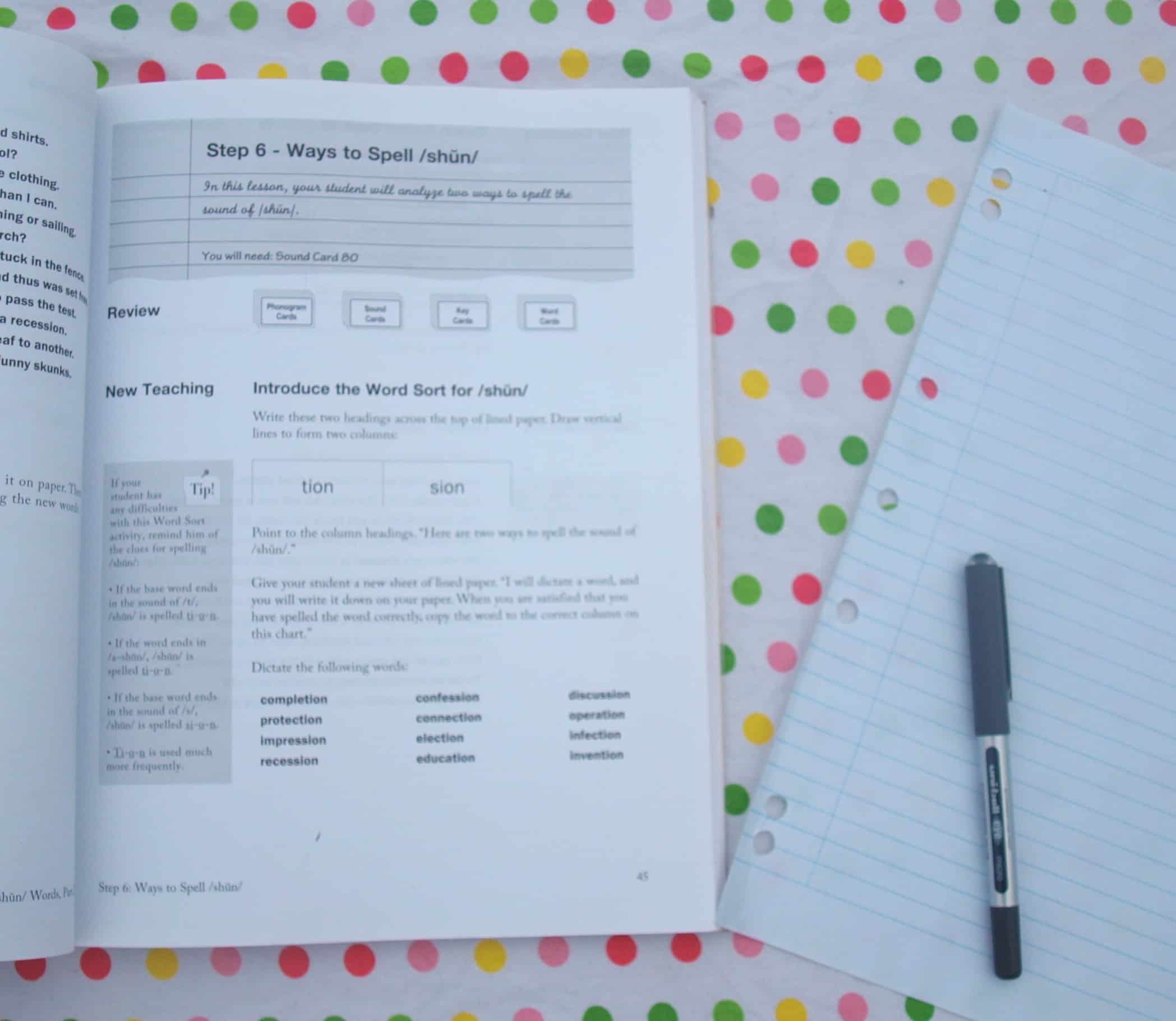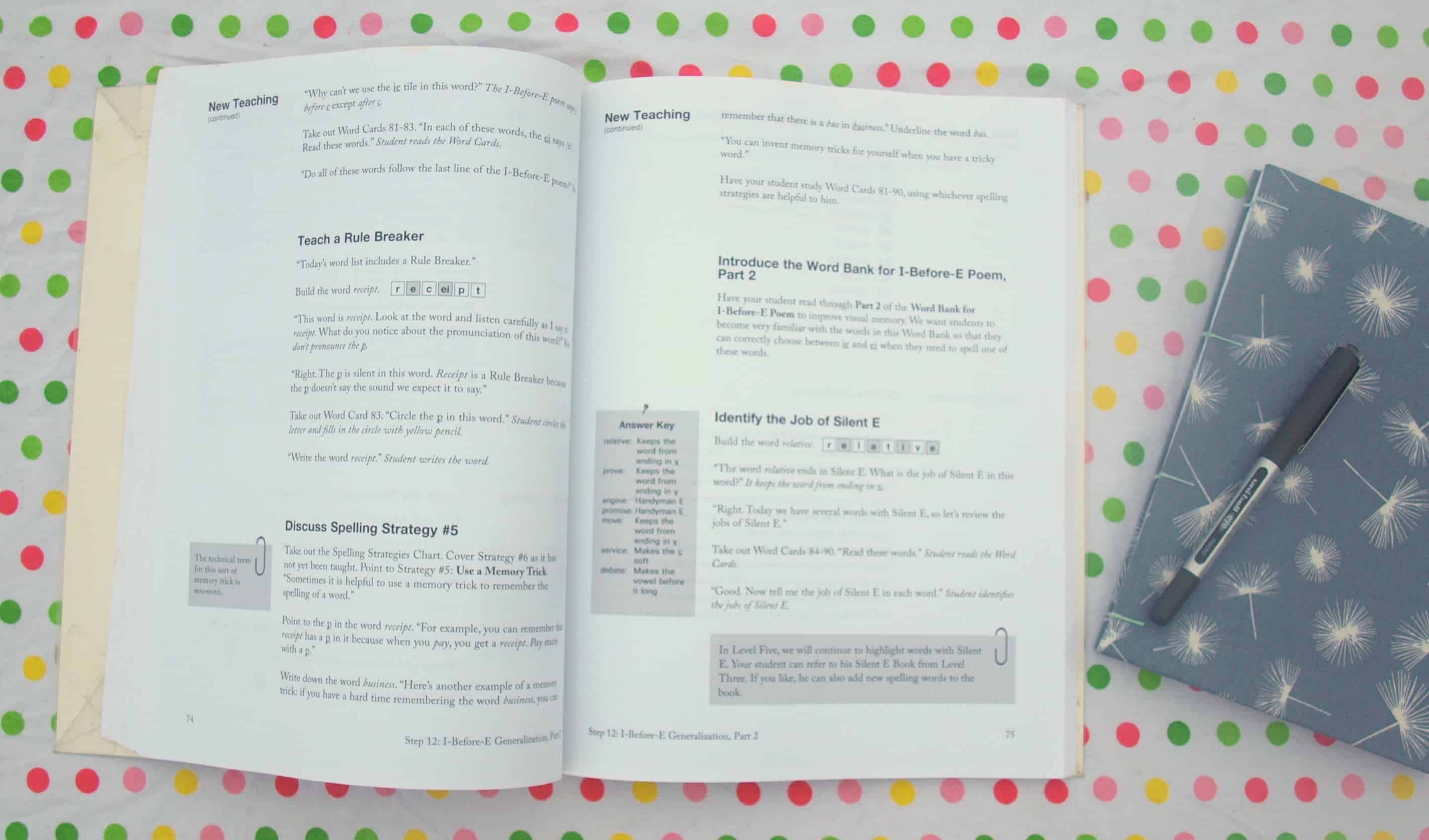
Homeschooling spelling is a bit like learning times tables – it involves a lot of rote learning, is incredibly boring, the real-life reasons for mastering it aren’t immediately apparent, and it is shoved on children at a too-young age.
Or maybe that’s just my opinion.
In my head, spelling works a bit strangely. I can picture the word in my head, and read the letters from left to right. The husband calls it my head blackboard. While this photographic memory for words works really well for me, my children don’t appear to have inherited it.
And because I never actually learned to spell, or ever struggled with it, I’m pretty terrible at teaching it. You would think being good at something would make it easier to teach it, but I’ve found that’s definitely not the case.
So when my children were young, around 6-8, we attempted to do spelling in a school-like way. Because that must work, right? It’s what everyone does? I found some lists, we did look-cover-write-check and a short and casual test after each list.
It didn’t work AT ALL.
They found it boring. I found it boring. Worst of all, they didn’t remember anything! Only a few weeks after covering a word in the list, they’d misspell it and I’d find they’d completely forgotten it. It was like most rote learning – it just didn’t stick once the test was over.
We tried a few resources and methods, but they were all pretty much the same – lists and repetition and rules with more exceptions than inclusions. They all got the same response, too.
We ditched formal spelling pretty quickly.
I can’t pretend I was completely comfortable with ignoring it – spelling is important to me, and watching them write sentences like, ‘thay went too tha shopes’ nearly drove my internal spelling police crazy. But the alternative was tears from everyone (including me), and they’d already shown me that when they were ready they learned quickly and easily, so I let it go.
Apart from a few important words (such as because and they), we didn’t pay much attention to spelling. If they wanted to write a letter or a story, they would draft it, I would copy and correct it, then they would copy it back. Or they would ask how to spell words as they needed. We kept reading, playing games, and talking about words and language. Every now and again we would test a sample of a spelling program, but none met their approval. Their spelling slowly improved, but they were not great spellers by any stretch of the imagination.
I crossed my fingers and figured a love of language and writing was more important than getting every detail correct. When the motivation is there, the skills follow. That belief has worked well every time I’ve trusted it, and it didn’t fail this time either.

Around the age of 10, my girls started to want to improve their spelling. They’d study my corrections and make a conscious effort to master common words. They started to notice spelling rules (and contradictions, English being English) and their spelling noticeably improved. It wasn’t perfect, but it was definitely acceptable.
Recently, at ages 13, 12 and 12, they got to the stage where spelling mastery became an interest, and a structured curriculum started looking like a great idea to them. Having at least five penpals each and not wanting me to correct their draft letters anymore was probably a driving motivation.
Enter All About Spelling.
A friend (and homeschooling mum of 10) lent me a few of her All About Spelling books and the girls started to work through them. They immediately decided that they liked them (this doesn’t happen often, unfortunately). The lessons are straightforward and logically organised by rules. It’s obvious how the words are related and how the rule works – other resources we’ve tried have mystified all of us.
It makes sense.

They all started at Level 5. I suggested Level 4, but they wouldn’t hear of it. They’ve agreed to work through the Book 4 flashcards as a compromise.
(This is what learner-directed learning looks like – children have an informed opinion, and are not afraid to argue for it. Vociferously. But they then work extra-hard to prove themselves right, so I really don’t mind).
I’m pleased to report that months later the knowledge is still sticking, and all three have vastly improved their spelling. Without stress, huge hours, or endless drilling.
Updated: I recently did a review and full-lesson walk-through of All About Spelling Level 1 – you can watch it here.
Here’s why we like All About Spelling
- It’s affordable. The Spelling Interactive Kit lasts the entire program, so if you have more than one child you can reuse it.
- It’s straightforward. AAS doesn’t require me to learn the complete linguistics behind spelling or memorise phonemes, and I’m grateful. I can understand the lessons at a glance.
- It’s quick. Each lesson can be done in around 15 minutes because they’re not filled with fluff.
- The Spelling Interactive Kit provides hands-on practice without me needing to spend hours crafting.
- My girls can do it independently. They rarely need me to explain or help.
- It’s low-tech. We like books and non-screen resources. There is a Letter Tiles app, but it’s optional.
- It’s secular. It doesn’t use religious quotes or any other theological references.

How to start using All About Spelling
Decide whether you need to start now. Is your child interested? Will they be cooperative? Or would you be better off waiting a little longer?
If they’re ready, (and only if they’re ready) do the appropriate placement test and work through the relevant samples. Properly. This is the best way to avoid curriculum regret.
If you and your child like the program, buy the correct level and get cracking!
Hopefully, you can be like us and find that homeschooling spelling can be pretty low-stress and easy when you follow your child’s lead.

I have a couple questions. My kids are 7 and 6 and we have not done formal spelling. A friend suggested All About Spelling a few weeks ago. My questions to you is 1. What if you found AAS when your girls were younger could that have worked for you? Or 2. Is the fact that they decided they were ready make all the difference? And along the same lines 3. What would you do the same or different knowing what you know now? Alicia Quigley
Hi Alicia, I think if I found it at about 10-11 it may have worked, but probably not earlier. Spelling is fairly complex, so it needs more advanced mental skills. I do think that children deciding they’re ready, and actually being mentally ready, makes all the difference. For example, my twins were having a lot of trouble with their maths books when they were 8. We put them aside for six months, and when we pulled them out again they did nearly a whole year’s activities in a few weeks. Something had clicked mentally. We could have struggled through for months and created a resistance against it and spent far more hours on it for worse results. I’ve found the same with every subject – I can influence them to be willing (to a point) but they also need to be capable. Looking back, I wouldn’t do anything differently. We have the results we want now, and they have a great attitude about it, so it worked. Good luck, and have fun!
I feel quite similarly, actually. I never had much trouble spelling because I am a voracious reader, and always have been. I learned through repetition, but not from lists – from seeing the words over and over again in “real” books. I am finding that my daughter is the same way. She is 7 now, and likes to read everything in the library. Her handwriting needs some shaping, but for the most part, only the words you might expect are misspelled. My two boys we’ll have to wait and see. One is turning 5 this week, the other is 2, so I’ve got time! Personally, I can’t bear the thought of spelling programs; the ones from my school days were just plain horrible, and for now I get a pass on homeschooling spelling because we spend so much time reading. I will have to keep All About Spelling in mind for the inevitable day that Daddy (a public school substitute teacher) says it’s time. Thank you for the concise list of pros – many of the programs I have seen recommendations are religious, and that’s not for our home.
You’re lucky your daughter is the same Amanda – mine read non-stop but the spelling doesn’t seem to stick as easily. I have found that the spelling has come along easily since they started AAS though. I think they just needed a quick overview of rules to supplement and order what they already knew from reading. I dread to think what teaching spelling to non-bookworms would be like!
Hi Kelly, thanks for sharing your experience of this….both my 18 year old son and my 12 year old daughter could benefit from this so will explore it with them before deciding. Thought it worth asking…are you interested in selling your program as your children work through the levels? I’m in Melbourne and try to buy secondhand whererver possible.
Hi Kate, I have a 9 year old, plus a 12 year old who won’t be ready for it for many years – I don’t think you want to wait that long! Ask around on the online homeschool groups, it’s fairly popular so you may find someone with a spare.
Hello! My story is very similar to yours and I’m ready/my 10 year old needs to learn the rules of spelling. Level 1 would be mind numbing, but I don’t want to miss anything important! Where would a new fifth grader start?
Also, I have a 7 year old just finishing all about reading level 1. She struggles with dyslexia but the reading program had helped so much. Do you suggest starting level 1 at the same time we start level two AAR next year? Do you wait until they are solid readers? I’m worried about fatigue, but the level seems right.
Thanks so much!
Hi Erin!
For your eldest, there are placement tests on the site, the link to them is just above these comments.
I would do reading and spelling at the same time because they reinforce each other so well. I’d do them at your daughter’s speed – I’d rather take longer to work through a level but do it thoroughly and without fatigue and struggles.
Hope that helps,
Kelly.